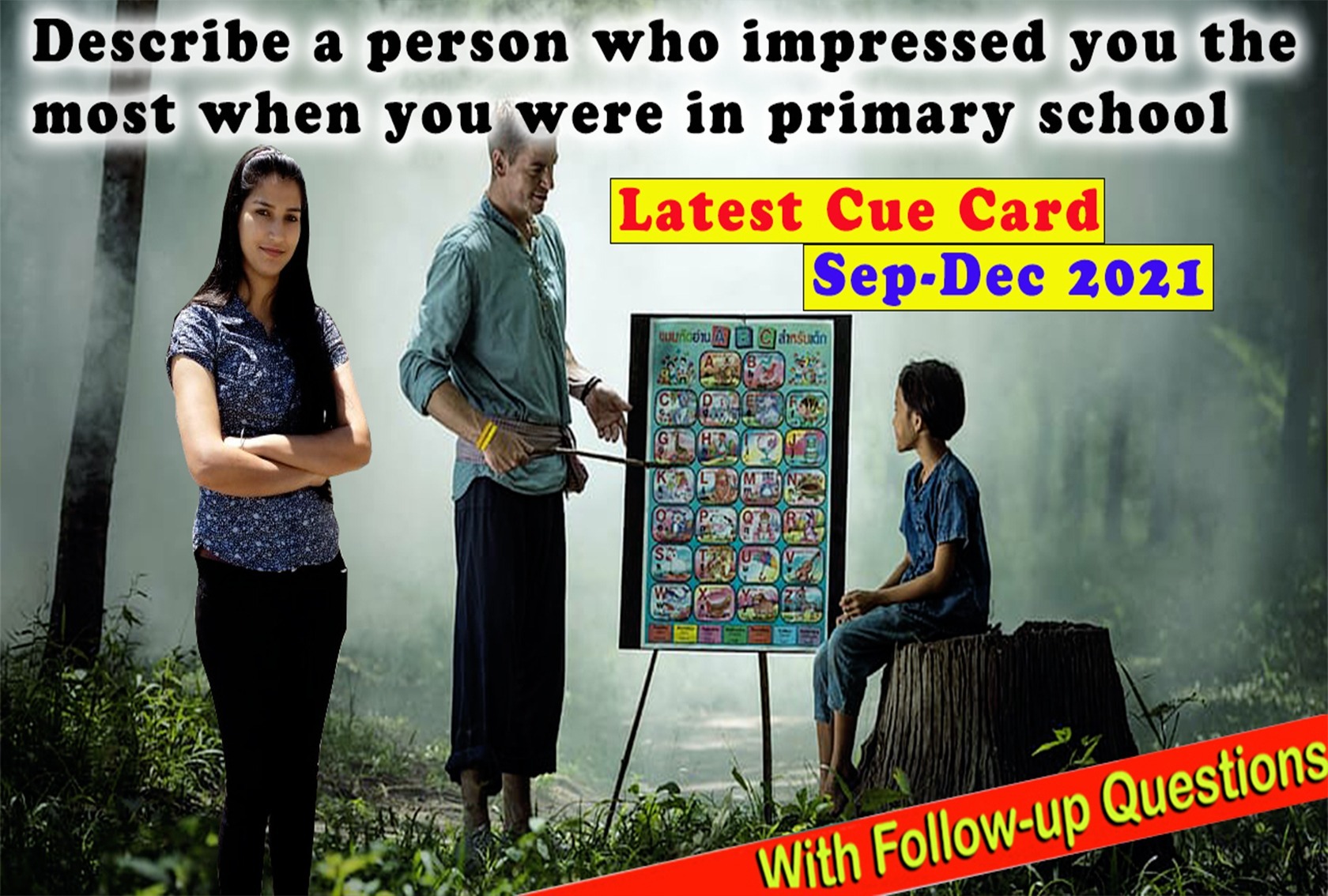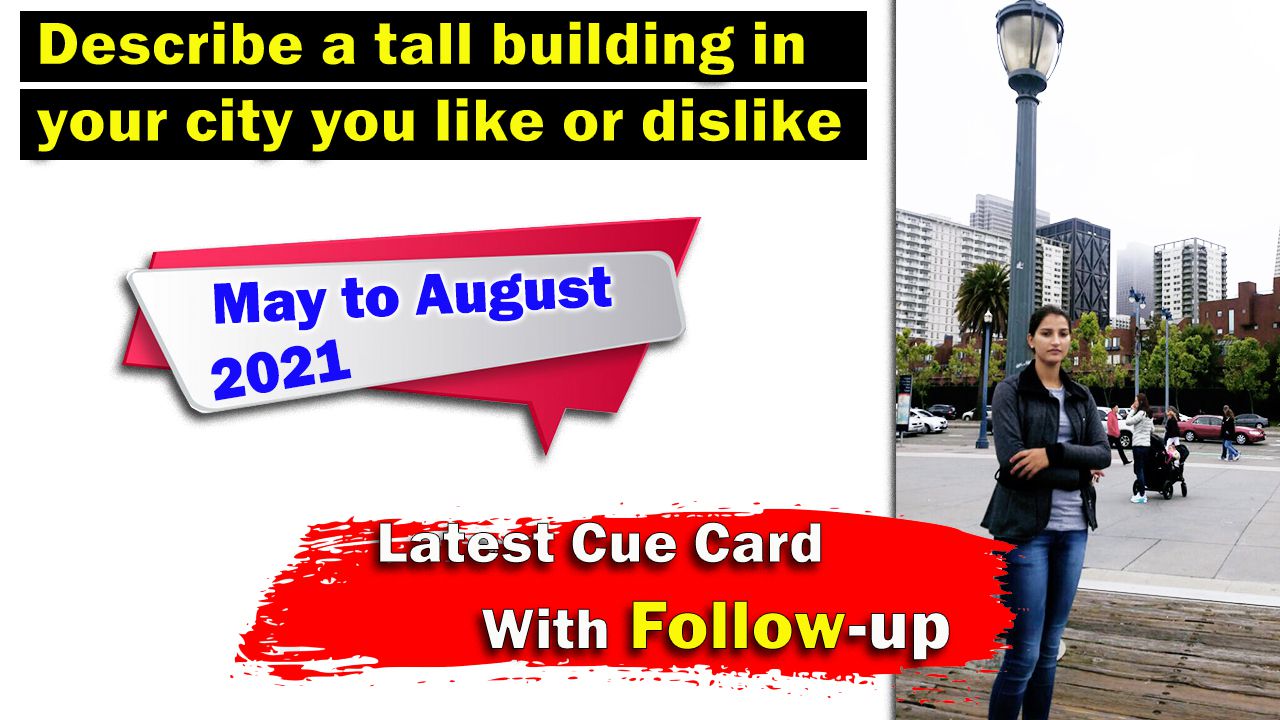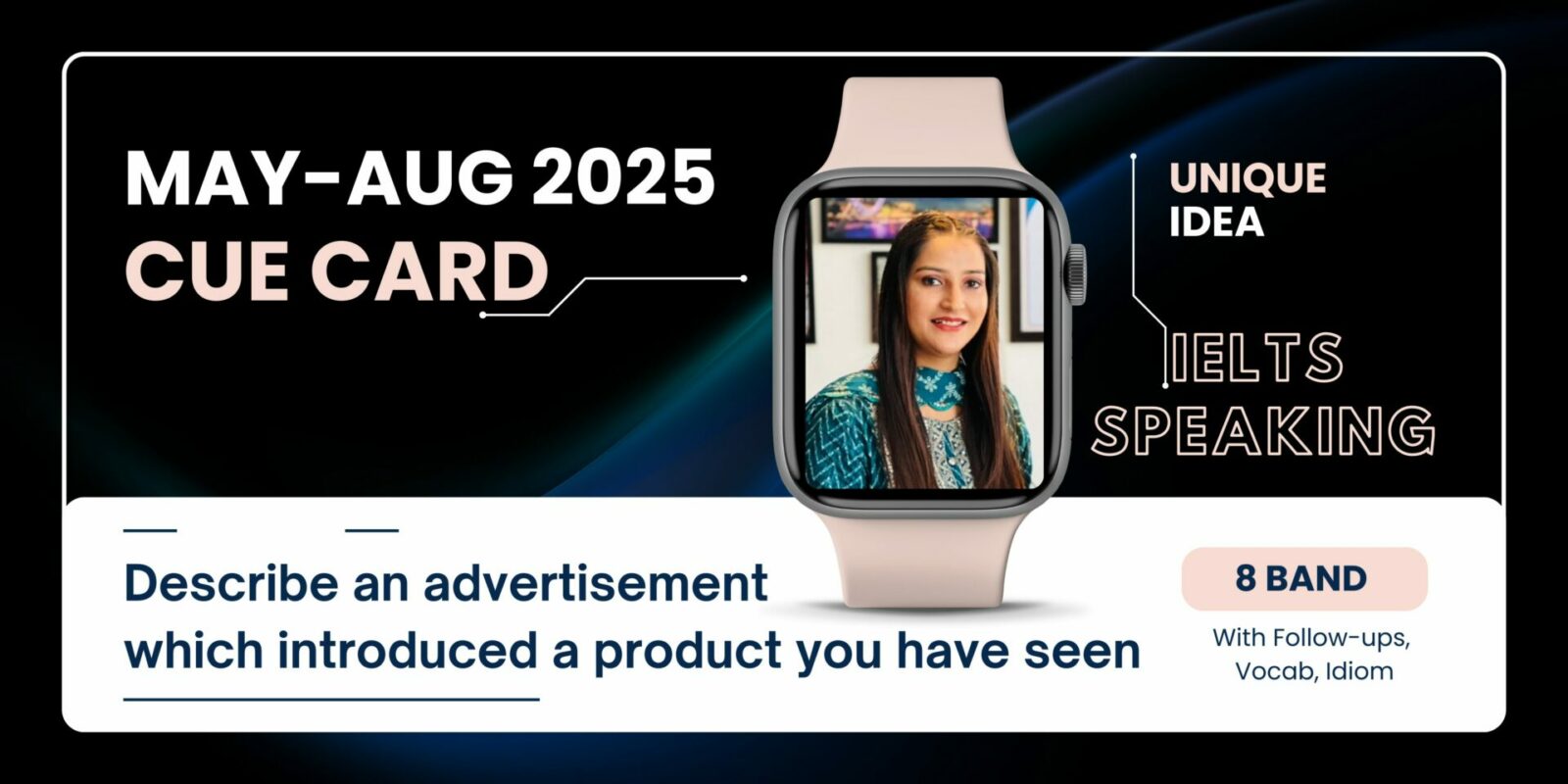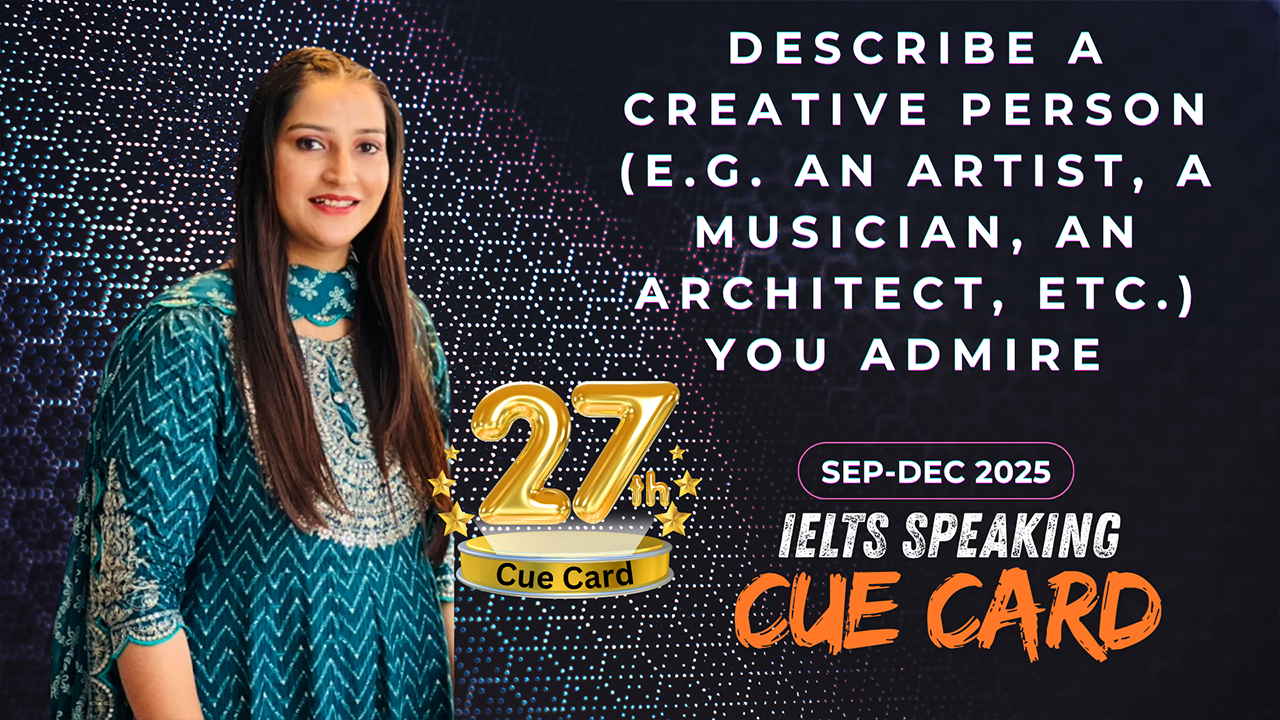Describe an advertisement which introduced a product you have seen | May-Aug 2025 Cue Card
When and where you saw the advertisement
What was the product
How you like the advertisement
And explain how you felt about it
- Part and parcel – an essential or integral component
- Caught my eye – attracted my attention
- Cherry on top – an extra desirable feature
- Icing on the cake – an additional benefit that makes a good situation even better
- To be honest – used to introduce a frank opinion
- Straight to the point – directly addressing the main issue without unnecessary details
- Planted a seed – caused someone to begin thinking about something
- Ticked all the boxes – met all the requirements or expectations
Well, advertisements are everywhere these days—on TV, on social media, and even on buses. They have become a part and parcel of our daily lives. One advertisement that really caught my eye and stayed in my mind was about a smartwatch.
If I remember correctly, I saw this advertisement about two months ago while I was watching a video on YouTube. It was a short ad for the Apple Watch Series 8, and it appeared right before the video started. To be honest, I was about to skip it, but the visuals were so eye-catching and vibrant that I ended up watching the whole thing.
As far as the product is concerned, it was a sleek, modern smartwatch packed with smart features. It offered fitness tracking, heart rate monitoring, sleep tracking, and even the ability to make calls and send messages without using a phone. On top of that, it was waterproof, which was the cherry on top.
What really stood out to me was how creatively the advertisement was made. It showed different people using the smartwatch in everyday life—while running, cooking, working, and even swimming. Not only that, but the background music was upbeat and energetic, and the transitions were smooth. The icing on the cake was the catchy slogan they used—“Your health, on your wrist.” It was short, simple, and straight to the point.
Honestly speaking, I was quite impressed after watching it. The advertisement made the product look both useful and cool. Even though I had no intention of buying a smartwatch, this ad sparked my curiosity and made me want to know more about it. It really planted a seed in my mind and now I’m seriously considering getting one.
All things considered, the advertisement was clear, creative, and very effective. It ticked all the boxes—it introduced the product well, showed its real-life benefits, and left a lasting impression. In my view, that’s what a successful ad is all about.
Follow-ups
- Where do you often see advertisements?
Well, to be honest, I come across advertisements almost everywhere—on TV, social media, hoardings, and even mobile apps. For example, when I scroll through Instagram or watch YouTube, ads pop up quite frequently. In short, it’s hard to avoid them in today’s digital world.
- What are the benefits of advertising?
From my perspective, advertising helps consumers learn about new products and make better choices. Moreover, it boosts business sales and builds brand awareness. For instance, I once bought a smartwatch after watching a convincing online ad, and it turned out to be a great experience.
- Are advertisements good or bad for children?
Well, it depends. On the one hand, educational ads can be helpful and informative.
On the other hand, too many ads for junk food or toys can mislead children.
For example, kids often ask parents to buy things they see in ads, even if they don’t need them.
- How does advertising affect people?
Honestly speaking, advertising influences people’s decisions and buying behavior.
Sometimes, it creates unnecessary desires or false impressions. For example, many people buy things during sales just because ads say “limited time offer,” even if they don’t really need them.












Got a Questions?
Find us on Socials or Contact us and we’ll get back to you as soon as possible.